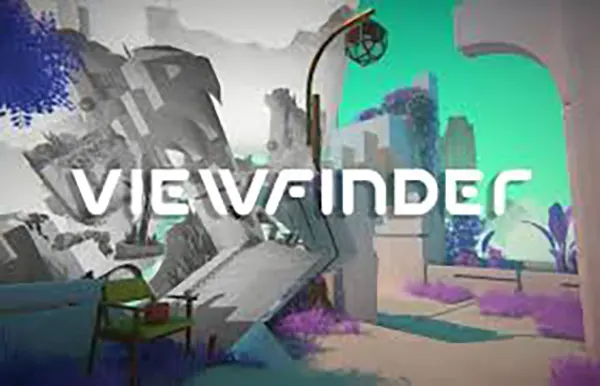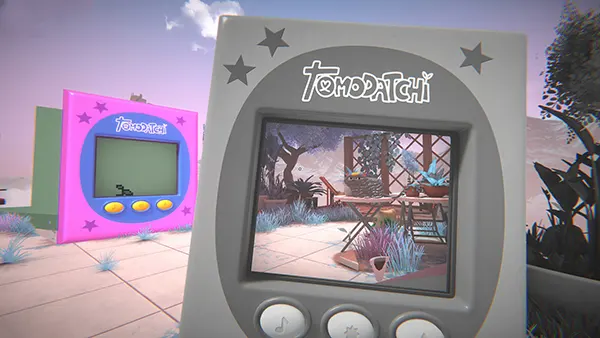
Viewfinder – A Game Where Photographs Reshape Reality
In February 2025, “Viewfinder” by Sad Owl Studios stands as one of the most inventive puzzle games of recent years. Blending photography, perception, and reality-bending mechanics, it challenges players to rethink space, object placement, and even the very laws of physics. Far beyond a typical puzzle experience, it taps into creativity and lateral thinking in a way that is both visually engaging and intellectually rewarding.
Rewriting the Rules of Space and Perception
“Viewfinder” revolves around a simple but powerful mechanic: using photographs to alter the game world. Players can place 2D pictures into the 3D environment, instantly transforming them into tangible architecture. A picture of a bridge becomes a real bridge. A photo of a wall can cover gaps or remove obstructions. This mechanic opens doors to unorthodox solutions and constantly surprises with its depth.
Each puzzle feels more like a playground for visual experimentation than a traditional challenge. The game offers increasing complexity, encouraging players to explore how angles, perspective, and even time affect the outcome. Because every level adapts to how the player chooses to solve it, no two playthroughs feel alike. This flexibility is what elevates the game from a puzzle-solving simulator to a creative expression platform.
One of the standout features is how the environment reacts to the images used. For example, a photo taken from one room can be transplanted into another, completely altering the spatial layout. There’s also an element of time manipulation through snapshots, allowing players to freeze moments or replicate past states. This multi-layered interactivity makes “Viewfinder” a game of infinite possibilities and ongoing curiosity.
The Role of Photography in Gameplay
Photography is not just a thematic element; it is the core gameplay mechanic. Players wield a camera to capture parts of the world, which can later be reused to navigate obstacles. This requires not only creative framing but strategic foresight. Taking a photo from the wrong angle may render it useless; the right perspective, however, can change everything.
The game cleverly teaches players to see differently. Early levels guide them in understanding depth, while later puzzles demand a mastery of positioning and object layering. Through trial and error, players learn how to create stable paths or construct solutions that feel like architectural improvisation.
In some stages, players are restricted in how many photos they can take or reuse, adding a resource-management element. This limitation enhances the challenge and encourages thoughtful experimentation. The act of capturing an image becomes both artistic and tactical—a blend rarely seen in games.
Art Direction and Immersive Atmosphere
The visual identity of “Viewfinder” is equally memorable. The game shifts between various art styles—from sketchbook lines to photorealistic textures and surrealist dreamscapes. These changes aren’t merely aesthetic; they affect the tone and functionality of each level. Players may move from a black-and-white hand-drawn world to a fully coloured photograph in seconds.
This stylistic variety helps maintain freshness across the entire experience. Players are constantly introduced to new environments that challenge their expectations. Each level is a self-contained artistic experiment, with visual storytelling that complements the mechanics. These transitions help guide emotional cues without the need for heavy narrative exposition.
Sound design plays a supporting but essential role. The game uses ambient tones and subtle environmental cues to heighten tension or provide moments of calm. It’s a quiet experience, deliberately designed to invite introspection rather than rush. The overall aesthetic fosters a meditative state, helping players focus on the delicate logic of the puzzles.
Realism Meets Surrealism
By combining realistic textures with abstract geometry, “Viewfinder” creates a liminal space that feels both familiar and dreamlike. This duality is one of its biggest strengths. The transitions between real photos and surreal spaces are seamless, enhancing immersion and disorientation at the same time.
Some levels evoke the works of Escher or Dali, especially when the player distorts or bends environments. Perspective manipulation recalls games like “Superliminal,” but “Viewfinder” adds its own twist through permanent spatial rewriting. Once a photo is placed, its transformation is final—until another one overwrites it.
This mix of the ordinary and the impossible invites the player to question what is real within the game’s universe. It also introduces philosophical undertones about perception and memory, though these are subtly embedded rather than overtly stated. The result is a rich, layered experience that rewards curiosity.

Availability and Player Reception
As of February 2025, “Viewfinder” is available on PlayStation 5 and PC via Steam and Epic Games Store. It received overwhelmingly positive reviews from both critics and players. Praised for its originality, intelligent design, and visual innovation, the game quickly established itself as a cult favourite among puzzle enthusiasts and indie game fans alike.
Players often cite its learning curve as perfectly balanced—challenging without being punishing. Its short to medium-length runtime (around 5–7 hours) makes it accessible to a wide audience, while its replay value comes from the open-ended nature of its mechanics. Communities have even emerged online where users share creative photo-based solutions to puzzles.
In recognition of its innovation, “Viewfinder” was nominated for several indie game awards and earned accolades for visual design and gameplay innovation. It has become a reference point for what puzzle games can achieve when unbound by traditional rules and encouraged by a strong artistic vision.
Sad Owl Studios and the Future
Sad Owl Studios, the team behind “Viewfinder”, has solidified its place in the indie scene. With this debut title, they demonstrated not only technical prowess but also a unique creative philosophy. Their approach—putting player creativity at the centre—resonated deeply in an industry often focused on scripted experiences.
There are already discussions about future updates or spiritual successors that may expand on the core ideas introduced in “Viewfinder.” While nothing is officially confirmed, fans remain hopeful. Given the studio’s success, it’s likely that they will continue developing titles that challenge and redefine genre expectations.
Whether or not a sequel materialises, “Viewfinder” stands as a remarkable case study in game design. It encourages designers and players alike to rethink interaction, perspective, and the space between imagination and code. Sad Owl Studios has carved out a space for games that are not only played but interpreted.
-
 Delta Force (2025) on Android / iOS — A New Standard of Mobile Shoo...
Delta Force (2025) on Android / iOS — A New Standard of Mobile Shoo...In 2025, mobile shooters continue to dominate app stores, with …
-
 Call of Duty: Mobile – The Ultimate Mobile Gaming Experience
Call of Duty: Mobile – The Ultimate Mobile Gaming ExperienceCall of Duty: Mobile is a revolutionary entry in the …
-
 Casino Simulators: The Rise of Grand Casino Tycoon
Casino Simulators: The Rise of Grand Casino TycoonIn today’s digital age, gaming enthusiasts don’t just want to …
